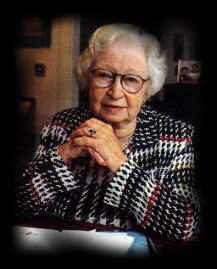 Yoon Joung Lee Many people remember about Anne Frank. But, far fewer know about Miep Gies. Miep Gies was one of the Dutch citizens who hid Frank’s family and several family friends in the secret room above her business place during World War II. She later discovered Anne Frank’s diary after the Franks were arrested. Miep Gies was born in 1909 in Vienna. She spent her childhood with poverty and disease. When she was 12, she suffered from tuberculosis and poor nutrition. She was sent to a family in Amsterdam to escape the food shortages in Austria. The family made modest income and they welcomed her although they already had five children. She grew up sharing everything with her Dutch foster family and was significantly influenced by their values. She was helped by her family when she was in trouble and she believed that it is our human duty to help those who are in trouble. Therefore, she willingly helped the Franks when they asked for help. During their years of hiding, Miep provided all of their daily material needs, such as food, clothing and books. Also, she provided not only their material needs, as she played the role of bridge with the outside world. In 1944, her heroic feat of humanitarianism ended as the people hidden in Miep’s attic were arrested. The Frank family was betrayed by a person whose identity remains unknown. Before the authorities emptied the attic after the arrest, Miep found Anne’s diary and kept it in her desk drawer. Even after the arrest, her efforts did not stop. She met the Austrian SS officer who had arrested them and she tried to bribe them to release her friends. She also visited Nazi headquarters to negotiate a deal. However, none of them was successful. She safely kept Anne’s diary and expected her to return when the war ended. Their father Otto returned from Auschwitz and he believed his two daughters had survived although his wife and friends had not. However, they learned of Anne’s death in Bergen-Belsen by a letter confirming that both daughters had died in March 1945, less than a few weeks before the camp was liberated by British soldiers. Miep gave a diary to Otto and it was published in 1947. The book, The Diary of Anne Frank, became the top best seller in the non-fiction genre after the bible in the world. For the rest of her life, Miep Gies devote herself to spreading out Anne Frank's legacy over the world. While she was taking a risk with her own life, she protected and cared for the Jews from the Nazis for more than two years. The heart of her character represented moral courage and modesty. She died at the age of 100 in the Netherlands in 2010. Comments are closed.
|
Archives
July 2017
Categories
All
|
 RSS Feed
RSS Feed